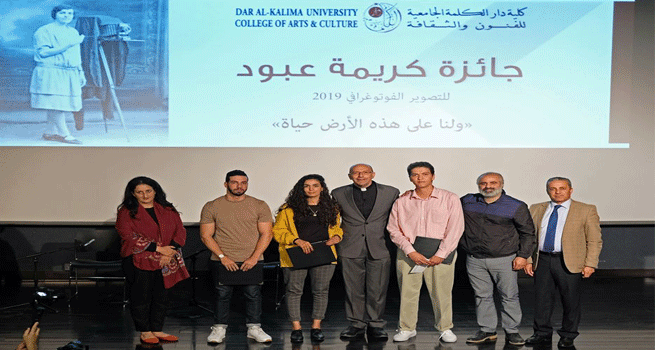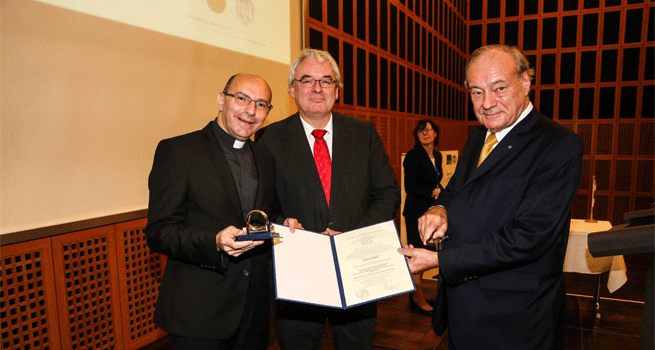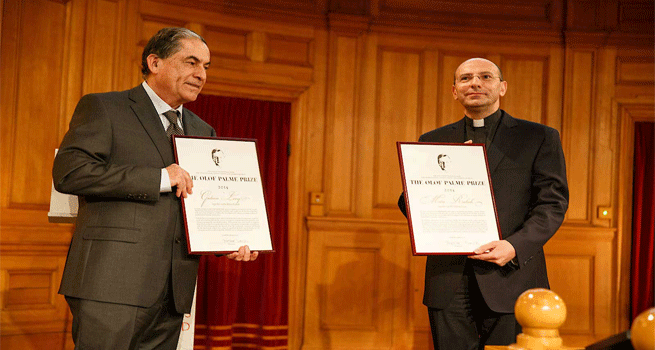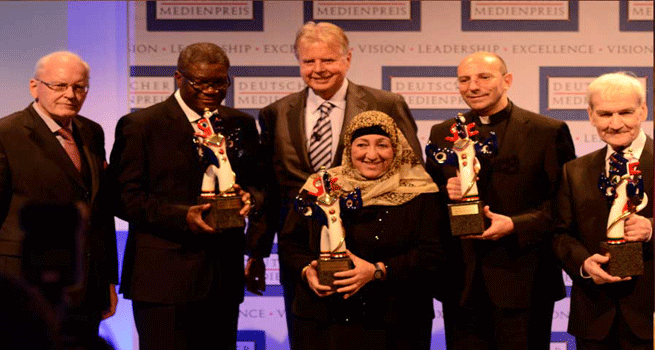LATEST AWARD
At an annual celebration of Palestinian artwork on 1 March, 2019, the Dar al-Kalima University College of Arts and Culture named two winners of the 5th Annual Ismail Shammout Award. Due to the extremely high quality of this year’s applicants the final jury selected four prize winners, including two first place winners, instead of the usual three prize recipients. “The quality of the submissions this year was so outstanding,” lauded Dar al-Kalima University College Head of fine art and interior design programs Professor Dr. Rihab Nazzal. The first place winners of this year’s award are Ahmad Yasin and Motaz Hjeir, both based in Nablus. The second place winner is Mahmoud Hammed, from Ramallah. Placing third is Reem Natsheh of Hebron.
.gif)
The theme of the fifth edition of this annual award, which celebrates the legacy and life work of prominent Palestinian artist Ismail Shammout, is “Where to?” Dr. Rihab Nazzal, a professor at Dar al-Kalima who is the primary organizer of this year’s competition, noted that this theme is drawn from the title of one of Ismail Shammout’s own artworks, created in 1953, just after the Palestinian Nakba. This piece of art depicts a Palestinian refugee and father. In one hand he carries a cane, while with the other he holds the hand of a child. Another child rests on his shoulders while a third follows behind. She explains further that “because Shammout lived through the Nakba as a teenager, many of his works have to do with the event, Palestinian refugees, and later the Palestinian revolution. He became the painter of the Palestinian liberation movement.”
The winners of this year’s award drew inspiration from this focus and even from Shammout’s art itself. Dr. Nazzal noted that she has been a part of “galleries and juries with budgets of over 100,000 USD, but this competition I enjoyed the most. I loved seeing how students connected to the theme and their work.” Each of the entries was of outstanding quality and drew on the artists’ personal and collective experiences.
Ahmad Yasin, a graduate of An-Najah University in Nablus, Palestine, titled his winning piece “Until When?”, continuing the question of Shammout’s original artwork and using many of the same symbols and visual elements. According to Yasin, “the cane in this painting is situated nowhere = in the midst of an emptiness that indicates loss and fear. . . The father who was carrying the cane is dead and so too is the national reference and the revolutionary basis upon which the Palestinian cause stands. The traces of the children are spread across a chaotic emptiness, indicating the fragmentation and loss we endure as we search for purpose and meaning.”
Fellow first place winner Motaz Hjeir, also a graduate of An-Najah University in Nablus, centered his winning artwork “Where To?” on the form of a bus that “used to travel freely from Nablus to Damascus, Beirut to Akka, and Gaza to Cairo . . . an indication of the depth of Arab identity – now disjointed and impossible.” The bus in Hjeir’s painting is suspended by a rope, surrounded by a void of nothingness. It represents a “one way life path toward the unknown,” absent the joy and recreation the trip on the bus once held.
Rev. Dr. Mitri Raheb, President of Dar al-Kalima University College, spoke of the importance of this particular award, saying “For us as a college that is focusing on arts and culture, it was important to launch [this competition] . . . Through these awards we are celebrating these personalities and their contribution to Palestinian society but also giving our students role models to strive towards and to be inspired by.”
The award drew 60 entries from artists across the West Bank and Gaza. These initial entries were evaluated by a jury of seven highly regarded artists and art scholars from across the Arab World; this jury selected a group of fifteen finalists to be judged by a second jury. Following this step, the organizers of the event created and translated a catalogue featuring the biographies, artists’ statements, and photos of the artists, which was available at the celebratory event held on 1 March, 2019. A second jury selected the winners from among these outstanding finalists.







